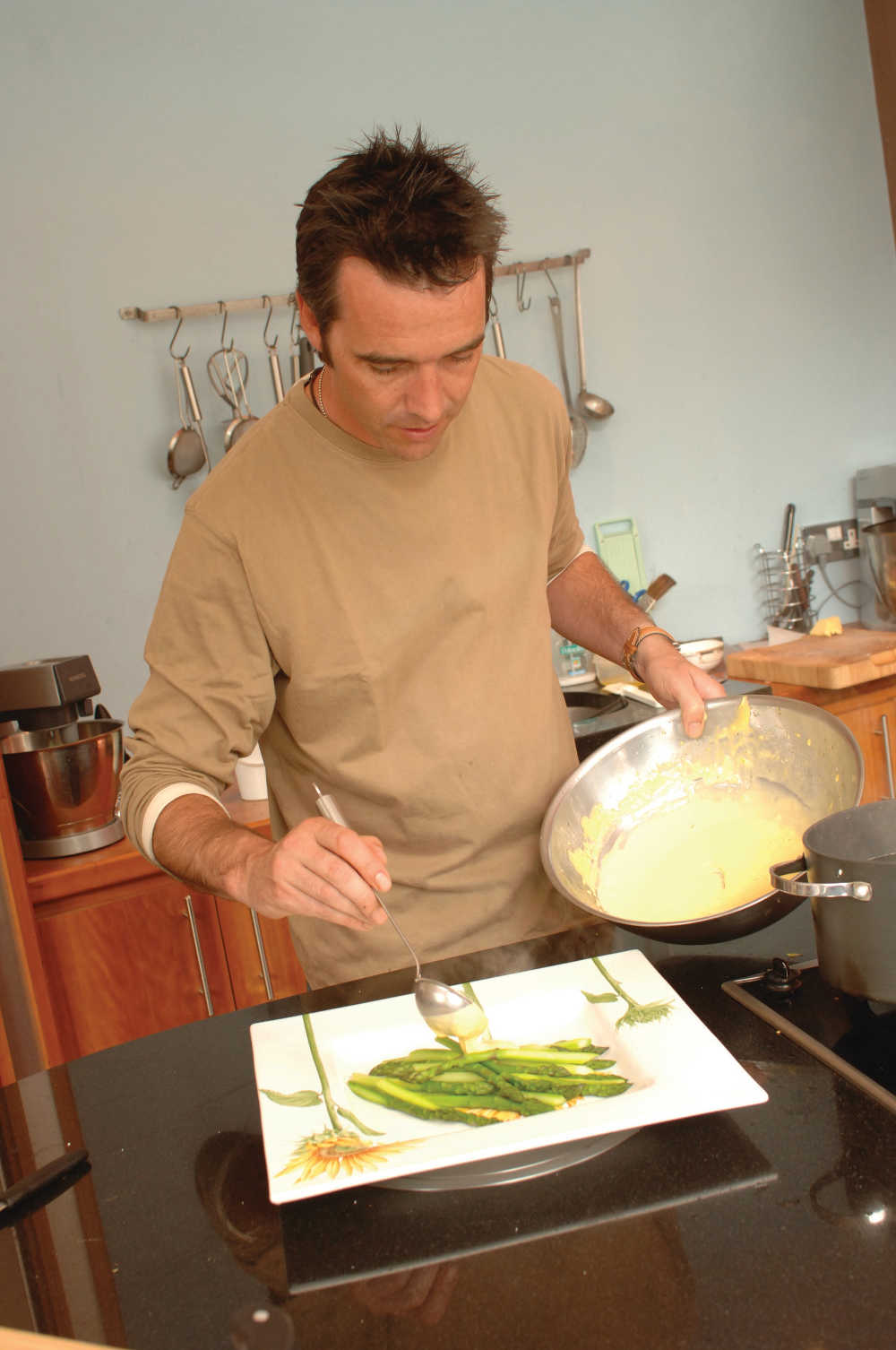Asparagus - In Season

Georgina Campbell
Asparagus is all too familiar as an all-year flown-in product, but locally grown asparagus is a different thing altogether. It was once widely grown in walled gardens and flourishes in many areas of Ireland - where it would be nice to see it back in production again.
Asparagus is hugely popular in northern Europe, where ‘asparagus menus’ are a speciality in restaurants in asparagus-growing areas at this time of year, and include white (blanched) asparagus as well as the green asparagus that is more familiar here.
In England, after years of struggling to compete with imports, asparagus growers are currently experiencing an upturn, as customers keen to support local produce understand the need to pay a premium and are happy to do so - and the same thing could happen here.
Its short season begins in late April and only lasts six to eight weeks - traditionally cutting finishes on Midsummers Day - but that is part of its charm, and its delicate flavour and seasonality makes it highly desirable in the kitchen.
Although not often seen in shops, it is worth looking out for Irish grown asparagus at small shops that may be supplied by local gardeners. It may be found at farmers’ markets too, especially in the South-West where the warmer climate and sandy soil suit it well.
Peter and Marita Collier of Drummond House at Baltray, Co Louth, have built up a reputation for their garlic production in the last few years, and they also grow asparagus. They now supply some of Ireland’s top chefs, including PJ McMahon of the famed Aniar in Galway. But they also supply some to Brid Carter of Honest2Goodness Market in Glasnevin, Dublin 9, where you can buy it on Saturdays (9.30-4) when available.
Marita knows there are other asparagus growers dotted around Ireland and would love to establish a network - anyone interested can contact her on 087 688 2202, or email: hello@drummondhousegarlic.com
And asparagus is much more than just a pretty vegetable. It has long been recognised for its medicinal qualities and is a good source of dietary fibre, protein and many vitamins, minerals, trace elements; low in calories and sodium, it has diuretic properties and is high in antioxidants. But, for all its health properties, its sheer deliciousness remains the best reason for seeking it out.

When buying, look for very fresh, firm asparagus with tightly furled tips. Before use, cut off the woody base of the stalk, or break the stems where they snap easily leaving the tough lower ends behind.
Bundles of asparagus are best boiled upright so that they cook evenly - ideally premium quality asparagus is best eaten steamed or semi-boiled (ie standing in a tall pan, with the lower stems in water and the tender upper section in steam), and served very simply as a starter with hollandaise (see recipe below), vinaigrette, melted butter or olive oil, Parmesan cheese, or even mayonnaise.
When plentiful and inexpensive, it makes a useful side vegetable and can be roasted in a little olive oil or char-grilled. It is a versatile ingredient for a wide range of dishes, from salads (used raw or cooked) and stir-fries to omelettes, risottos, quiches, tarts, soups and terrines. Eggs partner perfectly with asparagus and other flavours that work well include tarragon, butter, some cheeses (e ricotta, mascarpone, parmesan), Greek yoghurt, lemon, bacon and ham.
If you have a large garden or allotment, why not consider growing asparagus. It is a beautiful feathery-foliaged herbaceous perennial that grows to about 1 metre/3ft tall and - although it requires space and takes several years to develop enough of the precious stems to allow harvesting - it is a rewarding crop and 2 year old crowns that will establish quickly can be bought from English Fruit Nursery at Enniscorthy, Co Wexford (053 9240984 / 053 9240504; Email: info@englishsfruitnursery.ie )

RECIPE: Buttered Asparagus With Hollandaise Sauce is a classic treat that makes the most of delicious seasonal asparagus.
This recipe is from Kevin Dundon’s lovely go-to cookbook - Full On Irish - Creative Contemporary Cooking.
Hollandaise sauce should be lightly piquant and have a smooth pouring consistency. If it is too thick, add a little water or vinegar. It is a sauce which curdles easily. If this begins to happen, add an ice cube and whisk well; the sauce should come back together.
Serves 4-6
20-30 asparagus spears, trimmed
knob of butter
for the Hollandaise sauce
1 tbsp/1 1/4 US tablespoons
white wine vinegar
1 tbsp/1 1/4 US tablespoons
fresh lemon juice
3 egg yolks
about 100g/4oz/1 stick unsalted butter
salt and freshly ground white pepper
To make the hollandaise sauce, place the vinegar in a heatproof bowl with the lemon juice and egg yolks and a pinch of salt.
Whisk until thoroughly combined, then set the bowl over a pan of simmering water on a low heat and whisk for about 3 minutes until the mixture is thick enough to leave a trail when the whisk is lifted.
Meanwhile, melt the butter in a small pan or in the microwave. Gradually add to the egg yolk mixture, a little at a time, whisking constantly. When approximately 75g/3oz/ 3/4 stick has been added, season lightly with salt. If it is still too sharp, add a little more butter. Season to taste and keep warm.
Meanwhile, cook the asparagus spears for 3-6 minutes, depending on their size, in a large pan of boiling water or in a steamer standing in 7.5cm/ 3in of boiling water until just tender. Drain, return to the pan, and quickly toss in the knob of butter.
To serve, tip the asparagus onto a warmed serving plate and spoon over the hollandaise sauce, or serve it separately in a warmed jug and allow everyone to help themselves.






There are currently no comments
Leave a comment
Not a member? Register for your free membership now!
Or leave a comment by logging in with: